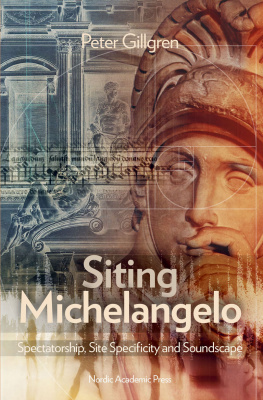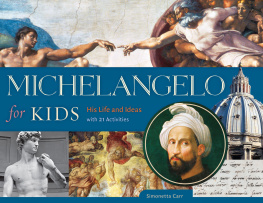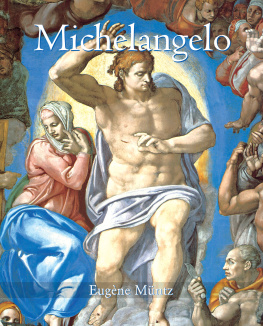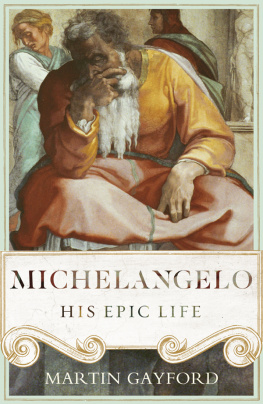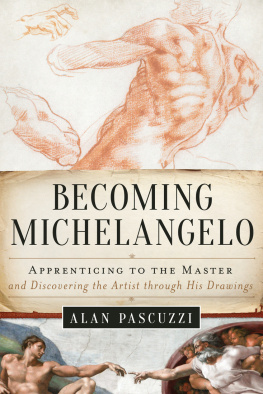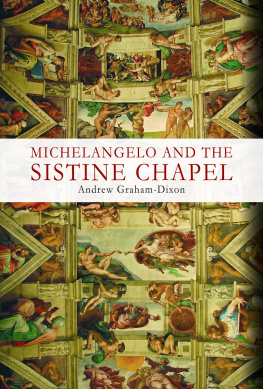Siting Michelangelo
Spectatorship, site specificity and soundscape
Peter Gillgren

NORDIC ACADEMIC PRESS
Copying or other kinds of reproduction of this work
requires specific permission from the publisher.
Nordic Academic Press
P.O. Box 148
SE-221 00 Lund
Sweden
www.nordicacademicpress.com
Nordic Academic Press and Peter Gillgren 2017
Cover design: Lnegrd & Co
Reconstructions and figures: Petter Lnegrd
Print: Livonia Print, Riga 2017
Tryckt utgva ISBN 978-91-88661-06-7
E-bok ISBN 978-91-88661-07-4
Siting (1) The position or location of a town, building, etc., especially as to its environment. (2) The area or exact plot of ground on which anything is, has been, or is to be located. (3) Computers, website. (4) To place in or provide with a site; locate. (5) To put in position for operation. Origin: 13501400; Middle English from Latin situs position, arrangement, site (presumably originally leaving, setting down), equivalent to si-, variant stem of sinere to leave, allow to be + -tus suffix of v. action. Synonyms: position, location, place. Can be confused with: cite, sight.
dictionary.com 2016, s.v. siting
Preface
The idea for this book was conceived in 2011 when I was a visiting scholar at Lcole des hautes tudes in Paris and the text was completed in Stockholm during a six-month sabbatical in 2016. My aim has been to study Michelangelos art as site specific and to further explore the notion of siting that was first raised in Siting Federico Barocci and the Renaissance Aesthetic (2010). What that study lacked is an awareness of the soundscape as fundamental for site specificity, and indeed of siting as a method in its own right, useful not only for artists but for scholars too.
I wish to thank my host Giovanni Careri for inviting me to Paris, for his helpful advice and inspiration, and for reading an early draft of this text. My thanks go also to Riksbankens Jubileumsfond, which funded the work, and to the Wenner-Gren Foundations and Kungliga Vitterhetsakademien who helped finance the stay in Paris. Riksbankens Jubileumsfond, Kungliga Vitterhetsakademien, and Sven och Dagmar Salns Stiftelse financed its publication by Nordic Academic Press, and I wish to thank them for making it possible for the book to appear as originally conceived. The editor Annika Olsson, copy-editor Charlotte Merton, and illustrator Petter Lnegrd have done admirable work throughout the publication process. Stockholm University has been most supportive and I am grateful to all my colleagues there, especially Margaretha Rossholm Lagerlf and Hans Hayden with whom I have had the opportunity to discuss the manuscript individually. I would also like to thank Tobias Pontara for discussing the manuscript with me from a musicologists perspective, and Graham Smith and Bernardine Barnes for their kind interest in my work. Fondazione Famiglia Rausing made it possible for me to stay at the Swedish Institute in Rome, and I wish to thank the Rausing board and the unwaveringly friendly and supportive staff at the Institute.
Next door to the Swedish Institute in Rome is the Danish Academy. This is where the thinking behind the present study was presented for the first time, in 2010, at the meeting which also saw the founding of the Nordic Network for Renaissance Studies (NNRS). I owe a debt of thanks to the director, Marianne Pade, for inviting me, and I am also grateful to Unn Irene Aasdalen, Outi Merisalo, and Leonardo Cecchini, and to the lecturers and many students at the interdisciplinary summer course Text, Memory, Monument at the Academy over the years. The NNRS held its first international conference in 2012, where the ideas about Michelangelo and via negativa were first presented. Aspects of the project were discussed at gatherings of Barockakademien, the Sixteenth Century Society & Conference, and the Renaissance Society of America, which welcomed me to Geneva (2009), Rome (2010), Wolfenbttel (2013), New York (2014), Berlin (2015), and Oslo (2016). A study day on the Sistine Chapel in 2015, organized in the Vatican by Ulrich Pfisterer et al., was invaluable, as was a symposium on the chapels ceiling at INHA in Paris organized the same year by Abslem Azraibi, Bertrand Madeline, and Florian Mtral, and the conference on the human body in Renaissance cultures of knowledge arranged by Unn Falkeid in Stockholm in 2016.
Earlier versions of the sections on the Sistine Chapel and the tomb of Pope Julius II were published in Konsthistorisk tidskrift (2001 and 2011) and Det skdliga och det bottenlsa (2010).
All translations are my own unless otherwise stated; where I have used published translations with parallel texts, such as the Loeb Classical Library and I Tatti Library, I have not given the original text in the notes. I have used James E. Saslows edition of Michelangelos poems, although with some modifications to the English translations.
My profoundest gratitude is to Maria and Anina, who were with me that memorable autumn in Paris. This book is dedicated to the memory of my mother, who introduced me to art, music, and life.
CHAPTER 1
The Wennerberg experience
The issue to be dealt with in this studygiving it its character and content while imposing certain restrictionsis the siting of Michelangelos art: how the production of meaning is effected when his art is actively related to its immediate location and to more remote circumstances. Siting Michelangelo is an exercise in positioning his work in illuminating coherences, through the complex act of being on site while at the same time constructing the setting. It means that works of artas they are sitedare arranged in certain constellations and thus encouraged to perform and surrender new meanings. As each place or site interacts with the sited object (be it an aesthetic theory or a sculpture), it is not only seen from new angles, but engenders qualities previously unknown. There is a productive intersubjectivity to the phenomena of siting, because the object, the site, and the place all impact on one anothers character and appearance; being both a noun and an action, siting can be understood as a matter-of-fact just as much as a continuing work-in-progress.
The investigation began when I came upon a long-overlooked poem by the Swedish composer, writer, and politician Gunnar Wennerberg, written in connection with his visit to the Sistine Chapel on the fifth day of Holy Week in 1852. Like several other foreigners in Rome, Wennerberg had come to look at Michelangelos paintings and to hear the famous Miserere by Gregorio Allegri. At the centre of the chapel the Pope was seated on his throne, his nearest disciples close to him on pews and further below the lesser dignitaries, all of them dressed in elaborate and beautiful garments.
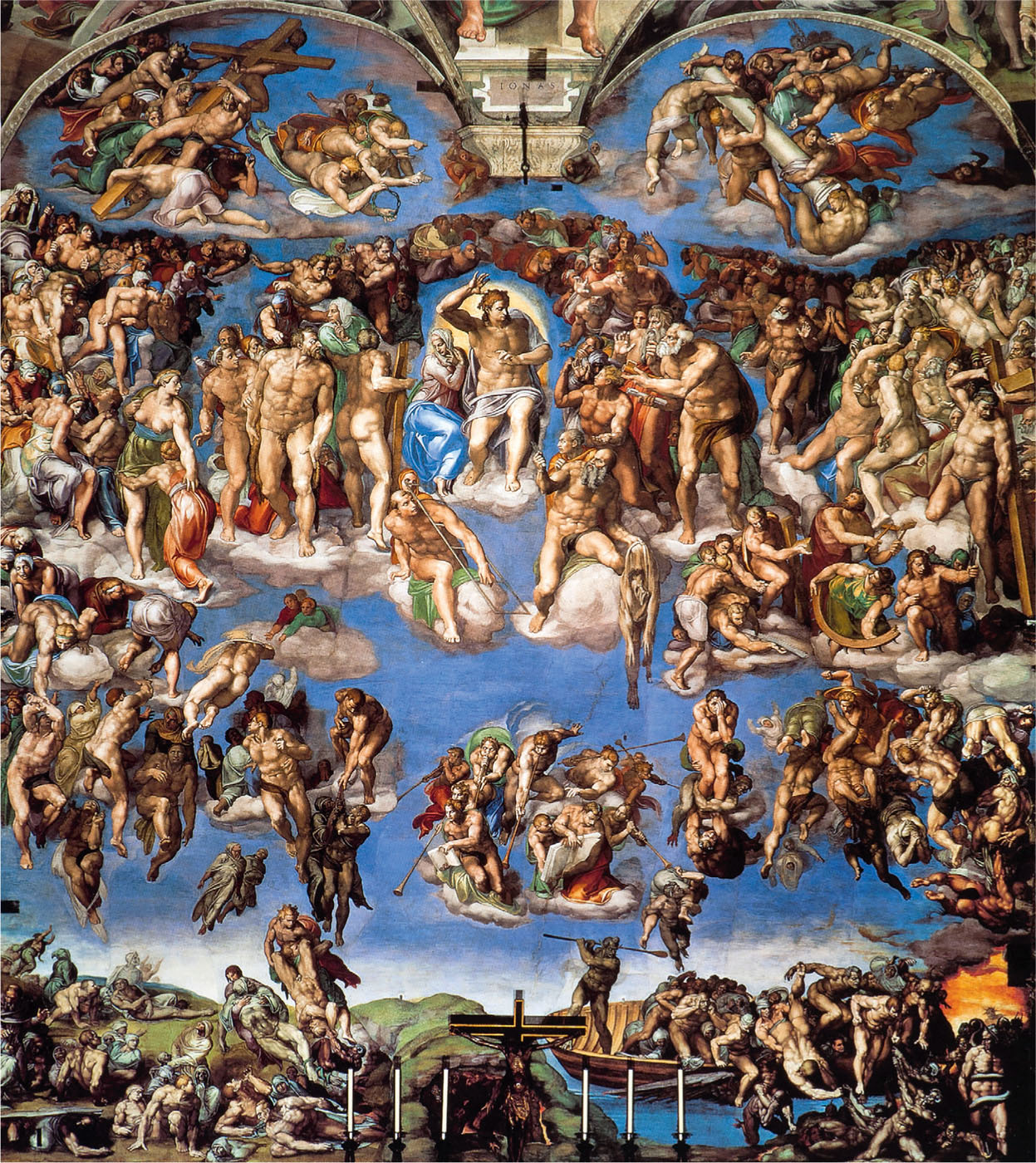
Michelangelo, Last Judgement , 15351541. Sistine Chapel, Rome. Fresco. (Photo: Alamy Stock Photo)
Finally, the choir began to sing in a severe, dry monotone, only now and then changing from unison to a simple harmony. When the first psalm had been sung one of the candles was extinguished and there was a silence of a few minutes. The singing started again, with a new text but in the same harsh style, and when the psalm was over another candle was snuffed out. As Wennerberg wrote, So it continued, this strange spiritual exercise, as tiresome for the soul as for the senses, until twenty psalms were sung, and of the candles, twenty-one from the start, only one was left.
Next page
